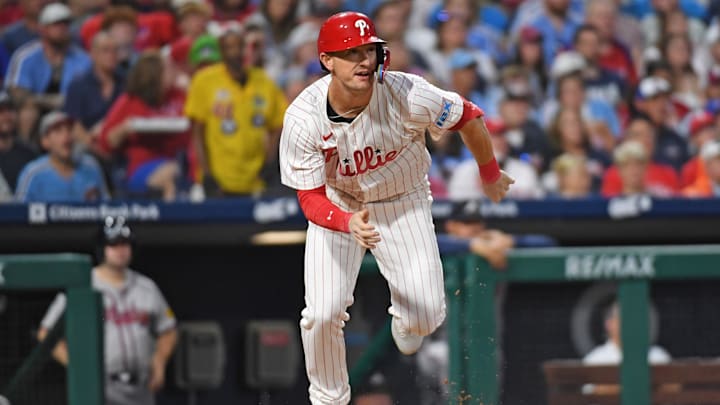With the Philadelphia Phillies' 2024 season coming to an abrupt end with their early playoff exit, many will be taking a look back at what exactly went wrong with the team that led to their disappointing finish.
One of the key areas that is under the microscope is their work at the trade deadline. With the opportunity to massively upgrade the ballclub in preparation for the postseason, did the Phillies do enough to make themselves legitimate contenders?
Let’s take a look back at the deadline moves made by the Phillies front office and regrade them based on the performances and outcomes that they got from their key acquisitions.
Regrading the Phillies 2024 trade deadline moves
Carlos Estévez
There’s no doubt that the biggest name the Phillies added at the trade deadline was Carlos Estévez. With José Alvarado struggling in the ninth-inning role, they needed a proven closer to help stabilize the back end of the bullpen heading into the stretch run. That was when they brought in the former All-Star closer from the Los Angeles Angels in exchange for two promising pitching prospects in George Klassen and Samuel Aldegheri.
The cost seemed a little steep, given that both Klassen and Aldegheri were perhaps the Phillies’ fastest-rising prospects. However, for someone who has shown great success in the role for the past two years, Estévez was believed to be worth every little penny. Prior to the deadline, Estévez was on a blazing 18-game scoreless streak during which he gave up zero runs on only three hits with two walks and 15 strikeouts over 18 innings.
After joining the Phillies, Estévez uncharacteristically struggled in a couple of early outings. But once he settled in nicely, he performed close to how he did with the Angels. In 20 relief appearances with Philadelphia, he went 3-2 while going 6-for-8 in save opportunities, along with a 2.57 ERA and 1.19 WHIP, giving up just six earned runs with seven walks and 18 strikeouts in 21 innings.
He was also solid for the Phillies in the playoffs, posting a 3.38 ERA and 1.13 WHIP, yielding just one earned run with one walk and four strikeouts in 2 2/3 innings of work over three games. Unfortunately, Estévez made one key mistake, which led to Francisco Lindor’s grand slam in Game 4 of the NLDS that ultimately ended their season.
As for the pitching prospects that went the other way, Klassen struggled a bit when he was promoted to Double-A by Los Angeles, posting a 5.65 ERA and 1.61 WHIP in seven starts to finish off his 2024 season. Aldegheri made his MLB debut with the Angels, but posted an underwhelming 1-2 record with a 4.85 ERA and 1.92 WHIP over his three big league starts.
In comparison, Estévez, for the most part, performed like the elite closer that was expected of him. However, the fact that he came up small in the biggest game of the season left a sour taste in the mouths of many of the Phillies faithful. As a result, the Estévez trade deserves a grade of B+.
Final Grade: B+
